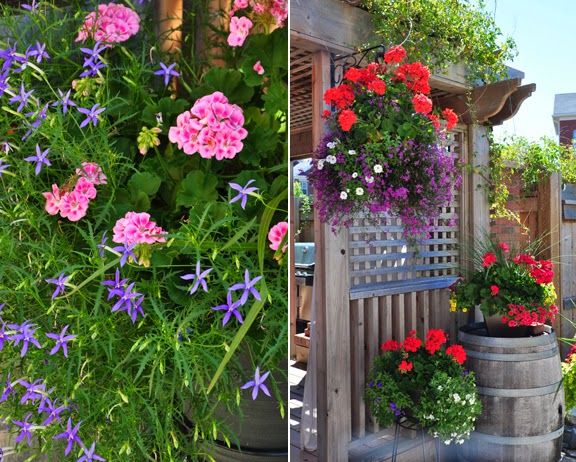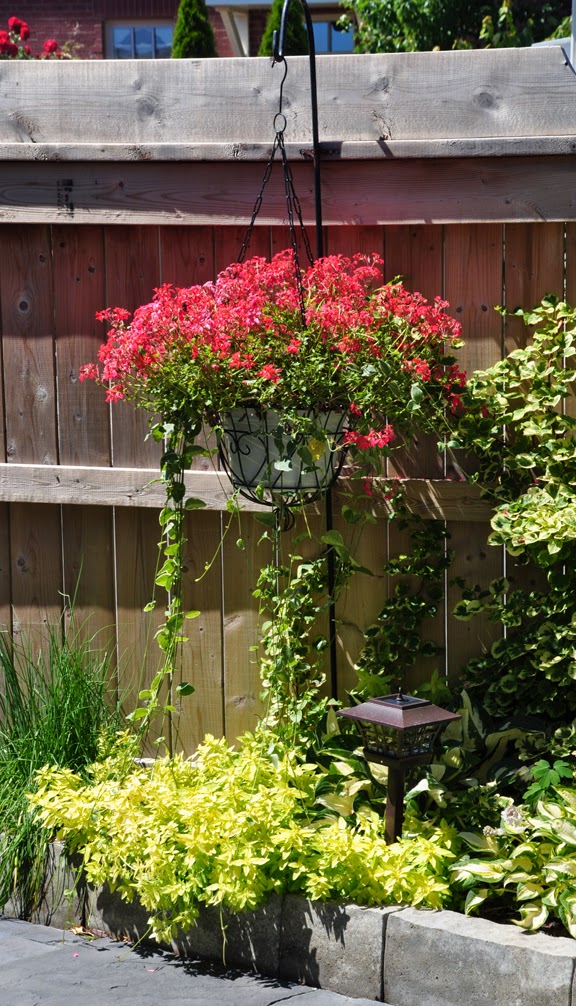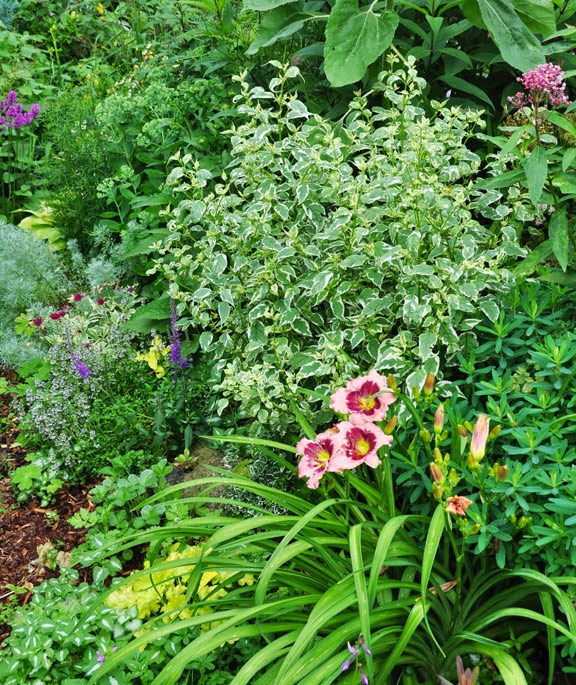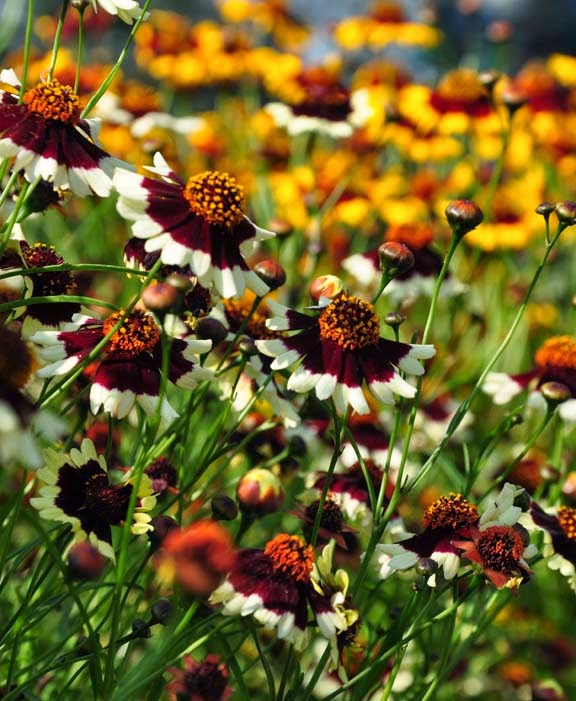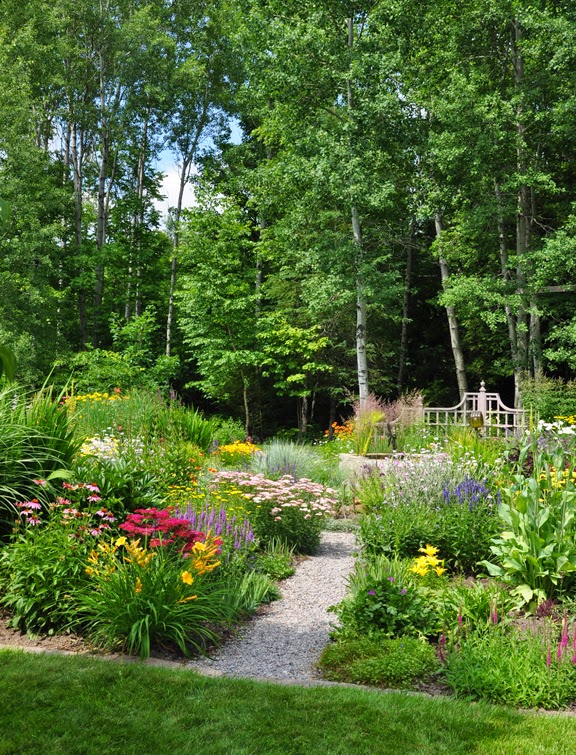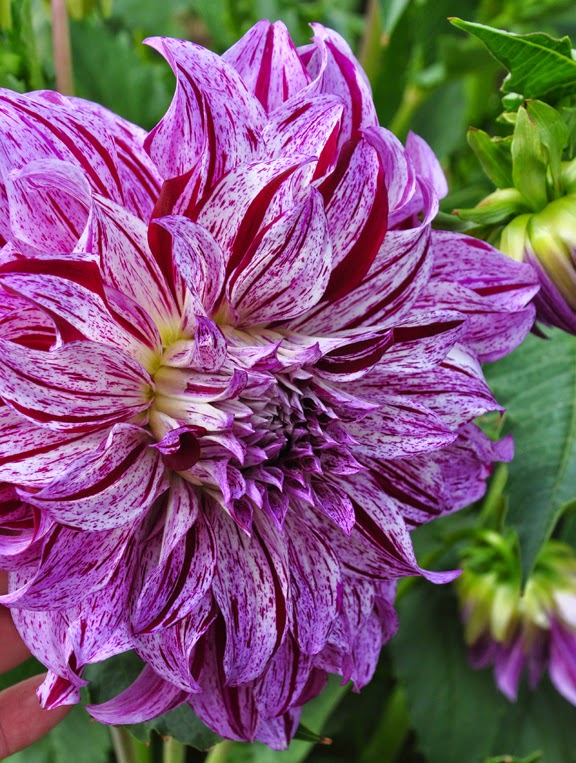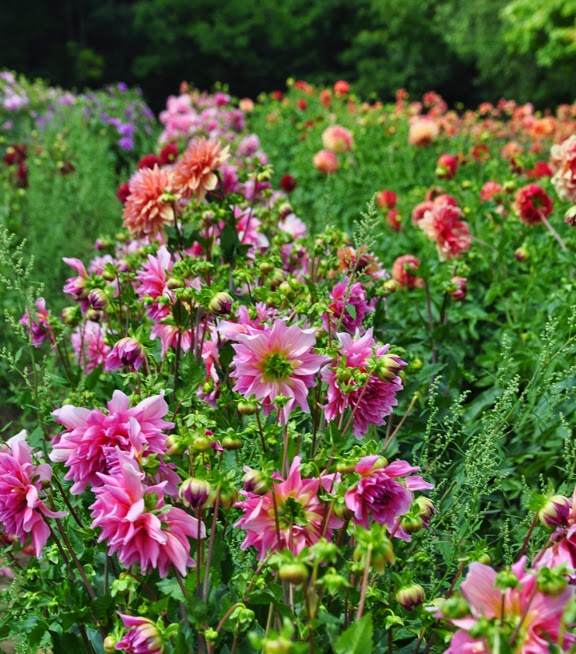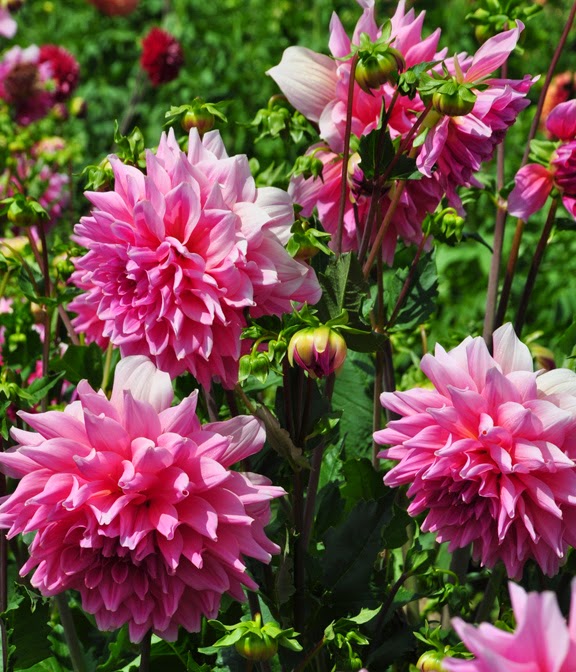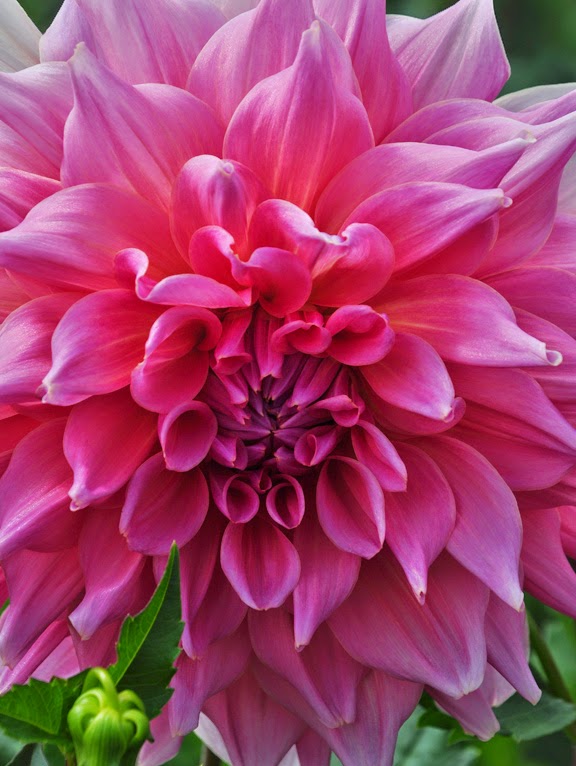Today I want to launch a summer long series of posts on the subject of healing gardens. Gardens can play an important role in both our mental and physical health and in this series I hope to look at the special healing power of plants.
To begin the series I invited Nancy Stordahl, a cancer survivor who can speak personally to the healing nature of gardens, to write a guest post. Nancy is a freelance writer, former educator and author of the blog Nancy's Point where she shares candidly about her breast cancer experience.
While the calendar year begins in wintery month of January, the commencement of each gardening season begins in spring. Its seems therefore appropriate to open this series with the arrival of spring.
Why Are Gardens Such Healing Spaces?
I am pleased to have been invited to share a few of my thoughts on nature and gardens and why they are both so healing for Three Dogs in a Garden; thank you Jennifer.
Have you ever thought about why nature is so calming and so healing?
Have you ever wondered why gardens inspire and are such healing spaces?
Now that a long winter is well behind us, this is the perfect time to think about these things.
Spring is not my favourite season. There are too many "muddy paw" days for my liking and then there is that reminder in spring. Spring is when my breast cancer was diagnosed in 2010. That was not a good spring.
But of course I do enjoy spring and relish all the signs of rebirth and regrowth that every spring brings. As I write this post, the snow is finally melting away, the birds are chirping, a certain pair of majestic eagles has returned for yet another year of nesting in my backyard, my crocuses are at last peeking above the ground, the tulips will soon be emerging as well, daylight is lengthening and thankfully the days are also getting warmer.
Sunlight after all, is the great encourager.
All these things are gentle reminders of how life renews and restores.
Cancer or no cancer, these reminders are healing.
Spring is something to be counted on, as are all the seasons. Even cancer cannot interrupt nature's rhythm of the seasons. I find comfort in that. I find comfort in nature period; most of us do.
Cancer or not cancer, nature is healing.
Have I gained a greater appreciation for spring and countless other things since cancer?
Maybe so, but I will not give cancer the credit. That kind of thinking does not suit me well.
When I was undergoing chemotherapy, hubby and I often found ourselves sitting in the hospital's newly added healing garden. It's actually called that, The Healing Garden.
We often found ourselves sitting in that lovely (well, lovely for a hospital) space surrounded by greenery and gorgeous blooming flowers. There was also a wonderful pond with an ever-so-soothing gently trickling waterfall, a fireplace, patio furniture arranged in intimate settings and even a player piano. The healing garden was a little oasis for us; a place to retreat, reflect and mostly regroup from the frenzy that is cancer treatment. For moments we could sometimes forget we were in a hospital.
For us it was a healing garden indeed.
But perhaps one of the biggest reasons I find gardens of any kind to be so healing is that they require so little and yet give back so much.
During that cancer spring and summer, I had little time to tend to, or even think about my gardens. But yet, the shrubs and perennials budded and bloomed; the display of color was uninterrupted. Despite my neglect, things grew; I wouldn't say flourish mind you, but they grew.
Of course the weeds did too. But the weeds could not over-power the beauty. When you looked at my gardens, you still saw beauty, or at least I did. And I loved looking at them, despite the imperfections that grew within.
Cancer or no cancer, gardens are healing spaces.
Since that cancer spring and summer, I think about all these things when I admire a garden, mine, or anyone else's. I think about how gardens don't ask for much and never perfection, just a bit of tending will do. Whatever one can give is enough.
Perfection is not what brings the beauty to a garden. Something else does.
Perhaps this "something else" is the reason why gardens are such healing spaces for us all.
Do you have a garden?
Why do you think gardens are such healing places?
Thanks Nancy for this wonderful post! Jennifer
About Nancy Stordahl:
Nancy is a freelance writer, former educator and author of the blog Nancy's Point where she shares candidly about her breast cancer experience. She writes extensively about her diagnosis and treatment, hereditary cancer, survivorship, grief and loss. She also shares concerns about some of the current forms of breast cancer awareness and advocacy and is a staunch advocate for those living with metastatic disease. Nancy is the author of Getting past the Fear: A guide to help you mentally prepare for chemotherapy. To read more visit www. nancyspoint.com.













